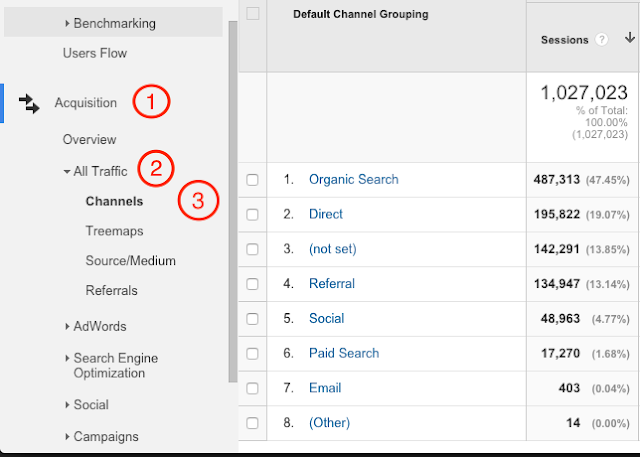Conversion Rates and Why You Should Care
7:19 PMIn my first post we looked at Landing Pages and why they are important to a nonprofit fundraising campaign. Assuming that we've implemented the landing page and campaign, both online and nonline, we'll examine the analytics to look at the conversion rate.
Conversion Rate - The ratio of conversions over a relevant denominator.
We started our analysis by looking at the sources that drove traffic to our landing page.
From here we can dig deeper and look at our social media channels.
We defined our goal as a completed donation on the landing page. Examining the conversion rate report for this goal can show us when, where and how visitors are converting.
Since we are probably paying for advertising in some way for this campaign, its important to know the return on investment, ROI. Measurement helps us define that.
“According to the 2015 Nonprofit Benchmarks Study, 76% of NPO’s invested in some form of paid advertising – the most popular being text and display ads.” (Vrountas, 2016)
By looking at a specific time period we may find that certain days of the week or time of day have a higher conversion rate. This helps us know when to spend our online ad dollars for the campaign.
Where the highest conversions come from help us to focus on where we should be advertising.
The "how" of the equation might be based on device. If we see a higher conversion rate for mobile devices we must make sure that everything on our site is mobile friendly. We might also target future campaigns to mobile users.
Additionally, if we see that bounce rates are highest with mobile devices, then there is perhaps an issue with the responsiveness of the site.
Real World Results:
When performing A/B testing for new campaigns, measuring the conversion rate for each of the different offers will help define and achieve the high possible goal outcome.
Let's look at CharityWater again. CW used A/B testing in an email campaign using the same image but a different call to action; matching, location specific, and location plus match.
This testing required four different landing pages and four different email campaigns. Beginning with a control page, they were able to test against the specific variables.
Image Credit: (Mongeon, 2014)
Image Credit: (Mongeon, 2014)
Image Credit: (Mongeon, 2014)
The results showed that people spent more time reading the "match only" email.
Image Credit: (Mongeon, 2014)
Conversion rates provide valuable information when we compare them against our goal, against sources and in testing, all of which lead to more successful campaigns.
Resources:
Vrountas, T. (2016, September 21). 4 Ways to Make Your Non-Profit Landing Pages Instill Donor Confidence. Instapage.com. Retrieved by https://instapage.com/blog/non-profit-landing-pages
Mongeon, M. (2014, October 16). Case Study: Using Analytics to Optimize your Content Strategy. Email On Acid. Retrieved from https://www.emailonacid.com/blog/article/email-marketing/case_study_using_analytics_to_optimize_your_content_strategy







0 comments